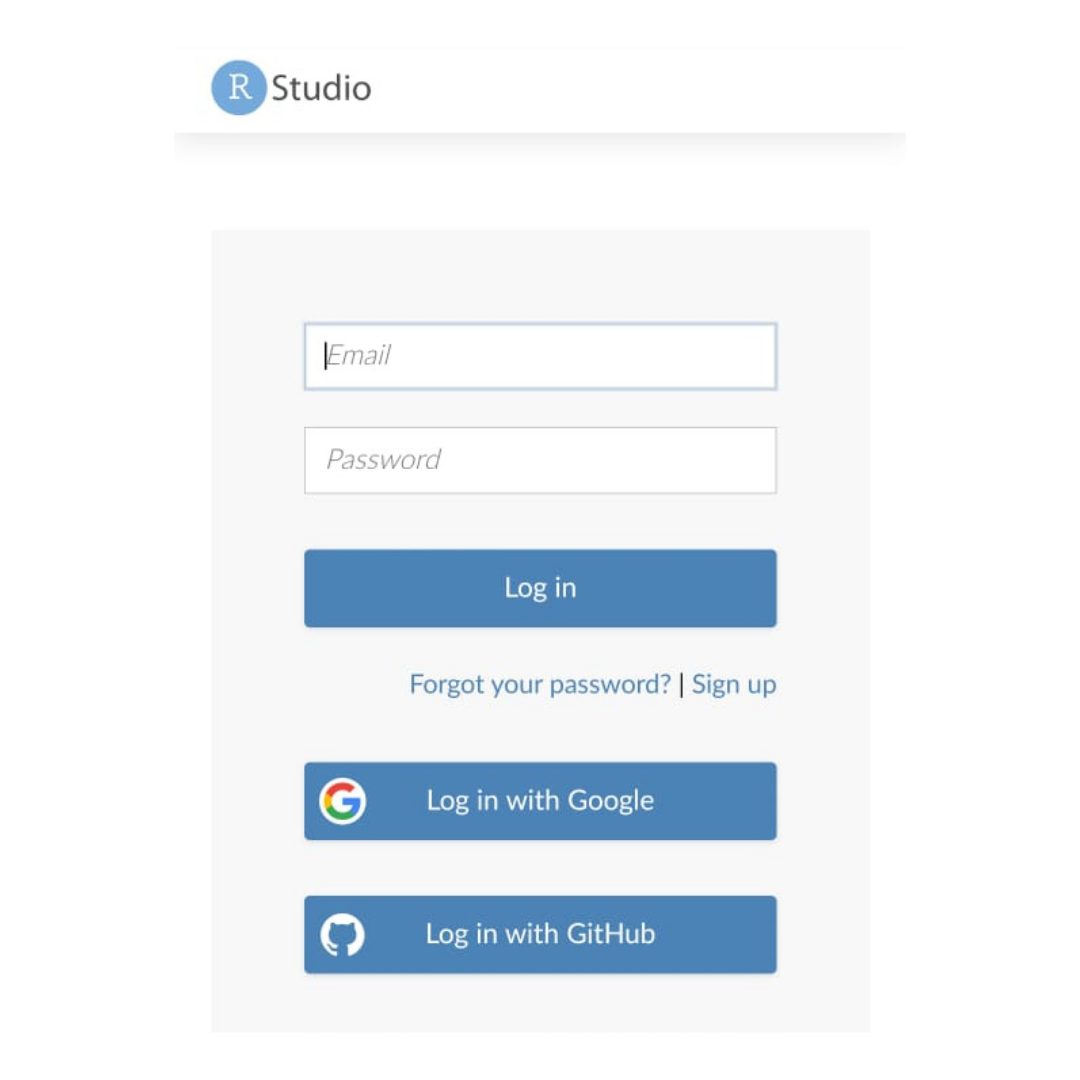

You are only responsible for managing the containerized application. All the components in this architecture use serverless infrastructure: compute, storage, network, data transfer, orchestration, perimeter security, logging, and monitoring. This follows best practices as suggested in AWS Well-Architected Framework. This blog post discusses a scalable, secure, and serverless architecture pattern on AWS to host RStudio Server and Shiny App. You can scale to the need of users accessing the dashboard visualizations. If you run RStudio on our proposed architecture, you can focus on building applications instead of managing the infrastructure. Migrating R workloads into a serverless model in AWS, customers can benefit from managed infrastructure, scalability, and security. Although it is possible to use virtual server infrastructure in the cloud to run R workloads, containerization offers significant operational benefits. On the page, click Sign Up.Data scientists use RStudio server as an Integrated Development Environment (IDE) to develop, publish, and share interactive web dashboards built on Shiny Server.

RStudio Cloud has the free and the commercial version (which is fortunately very affordable). learn data science in an instructor-led environment or with interactive tutorials.teach data science with R to our students or colleagues.share projects with our team, class, workshop or the world.analyze our data using the RStudio IDE, directly from our browser.And it also adds that by using this platform, we can RStudio described it as a lightweight, cloud-based solution that allows anyone to do, share, teach and learn data science online. It also helps colleagues working together on R projects. RStudio Cloud also allows collaboration between R teachers and students. Anyone can sign up and start using RStudio on the cloud.It is one of the the quickest way to learn R.īy using RStudio Cloud, we do not have to install R on our local machine. 12.10 Model adequacy for Weibull distributionīy RStudio facilitates the learning of R.12.8 Weibull (Accelerated Failure Time).11.12 The proportional hazard assumption.11.9 Estimation from Cox proportional hazards regression.11.8.2 Advantages of the Cox proportional hazard regression.11.8.1 Cox proportional hazard regression.11.8 Semi-parametric models in survival analysis.11.7 Comparing Kaplan-Meier estimates across groups.9.13 Presentation of table of statistics.9.9 Multivariable multinomial logistic regression.9.7 Univariable multinomial logistic regression.9.5 Estimation for Multinomial logit model.9.4 Models for multinomial outcome data.9.3 Examples of multinomial outcome variable.8.14 Prediction from binary logistic regression.8.10 Convert the log odds to odds ratio.8.9 Multiple binary logistic regression.7.4.4 Multivariable – Judicious variable selection.6.9.1 Overlaying histogramss and boxplot.6.9 Two variables: Plotting a numerical and a categorical variable.6.8.3 Histogram and density curve together.6.8 One variable: Distribution of a numerical variable.6.7 One variable: Distribution of a categorical variable.6.2 Questions to ask before making graphs.5.12.4 Changing the level of categorical variable.5.12.2 Conversion from numeric to factor variables.5.12 Data transformation for categorical variables.5.10.2 Summary statistic using summarize().5.10 Group data and get summary statistics.5.9.2 Select observation using filter().5.9 Sorting data and select observation.5.8.2 Generate new variable using mutate().5.8.1 Select variables using dplyr::select().5.8 Select variables, generate new variable and rename variable.5.5 Create a new project or set your working directory.5.3 Common procedures for doing data transformation.4.6.2 Important Questions when Making Graphs.4.2 History and objectives of Data Visualization.2.4.2 Check if the package you need is available in your R library.



 0 kommentar(er)
0 kommentar(er)
